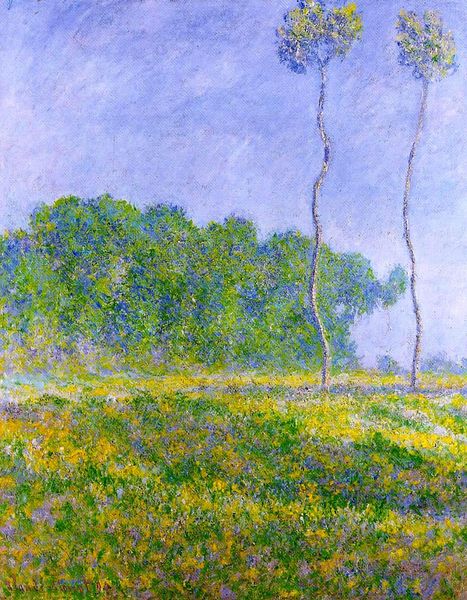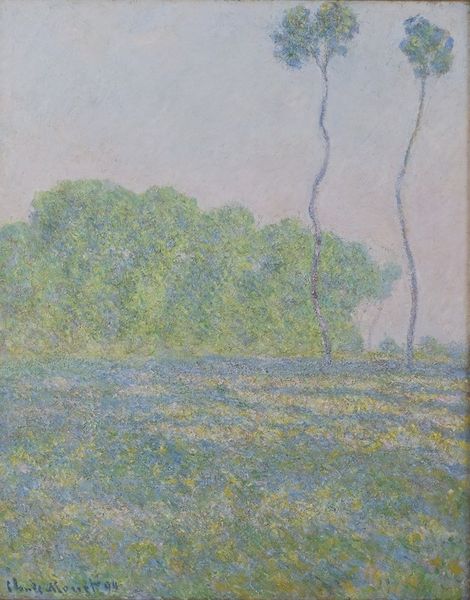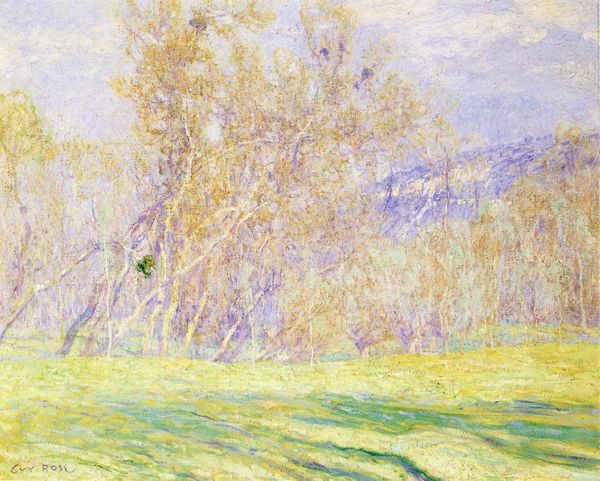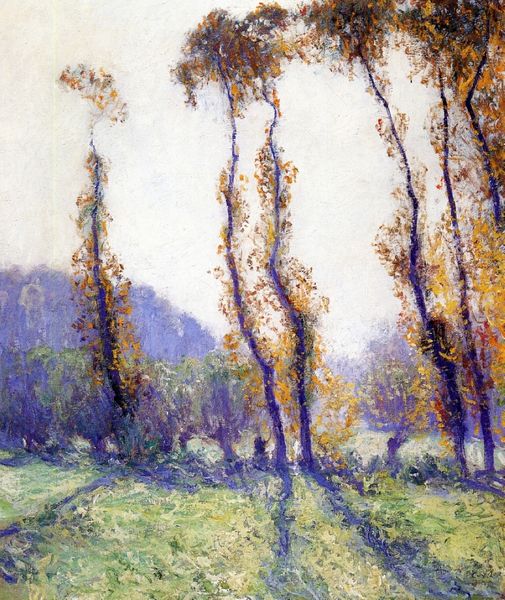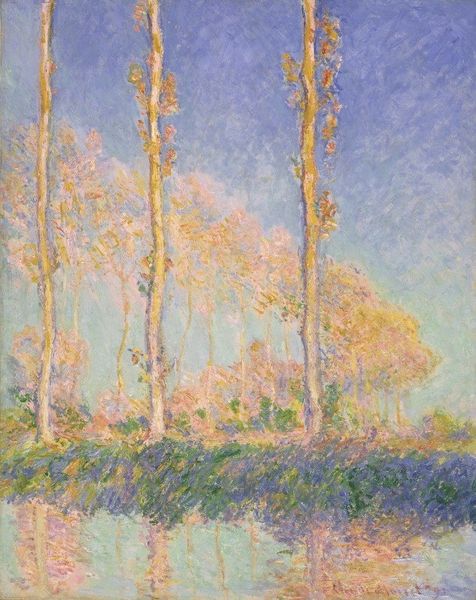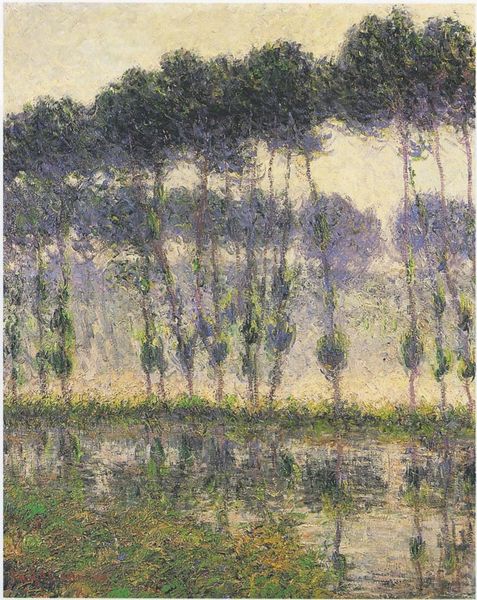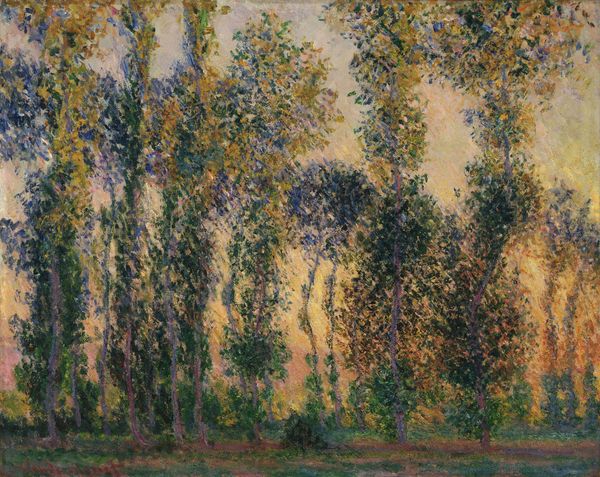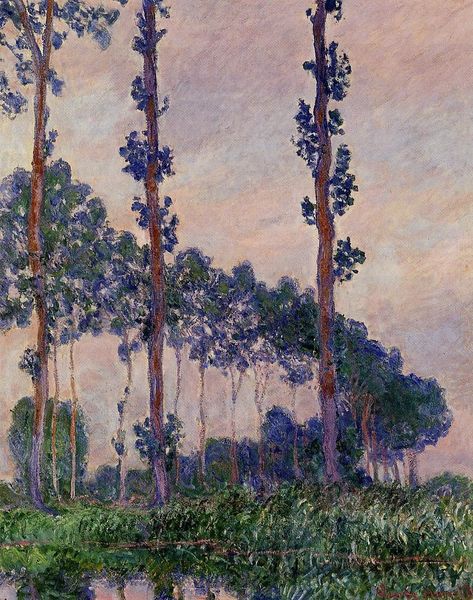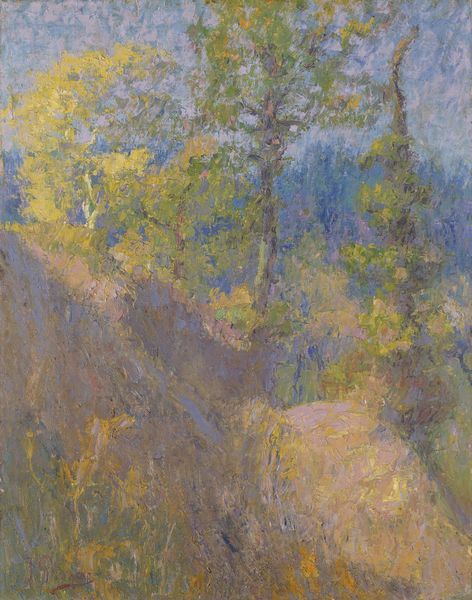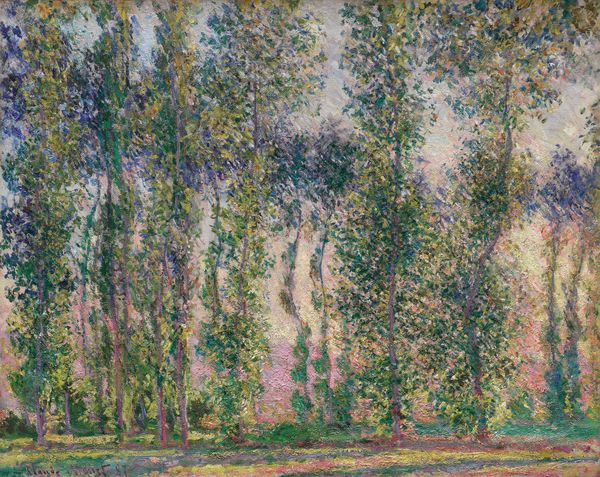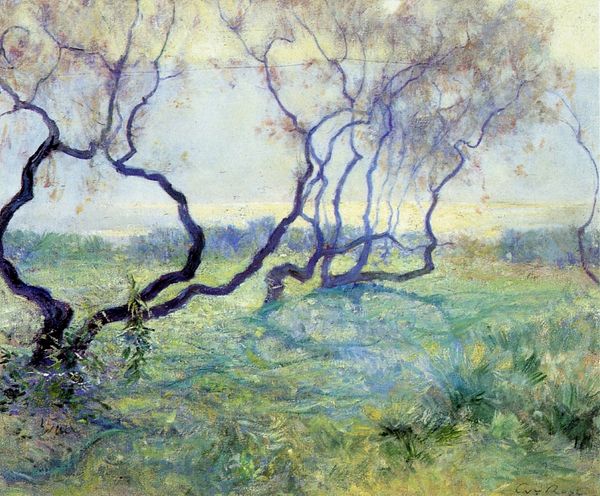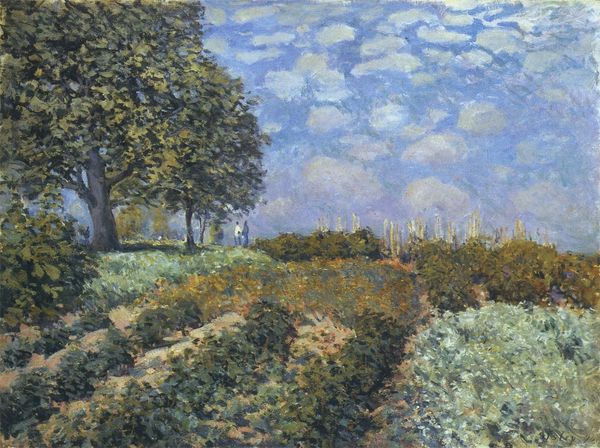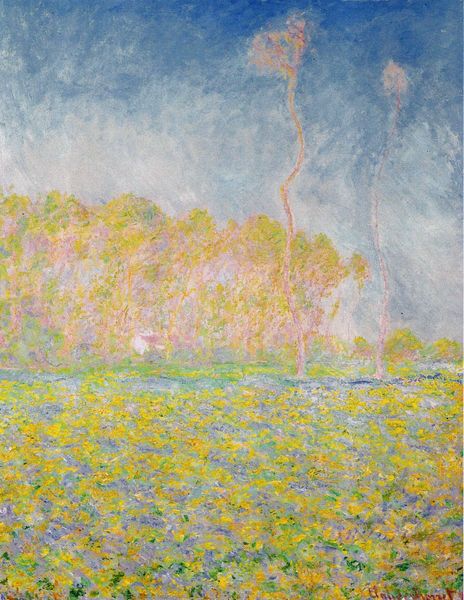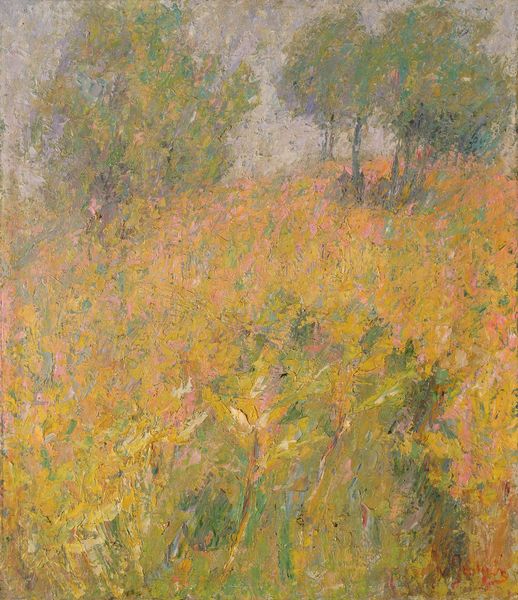
Copyright: Public domain
Claude Monet's "Springtime. Meadow at Giverny" is a canvas saturated with subtle chromatic modulations. The impression is one of light and atmosphere, achieved through loose brushstrokes and a delicate handling of color. Monet disperses traditional forms to concentrate instead on the sensation of a scene. The composition is structured by bands of color: the meadow, trees, and sky, each rendered with an almost scientific attention to light's effect. Monet's application of paint in discrete touches—a technique central to Impressionism—serves to dissolve solid forms into a play of reflections. Consider how this approach aligns with the late 19th-century shift in philosophical thought, a move away from representational precision towards subjective and sensory experience. In "Springtime," Monet destabilizes fixed meanings, offering us not a mere depiction of a meadow but an impression, a moment caught in the flux of perception, and inviting us to reconsider the act of seeing itself.
Comments
No comments
Be the first to comment and join the conversation on the ultimate creative platform.
